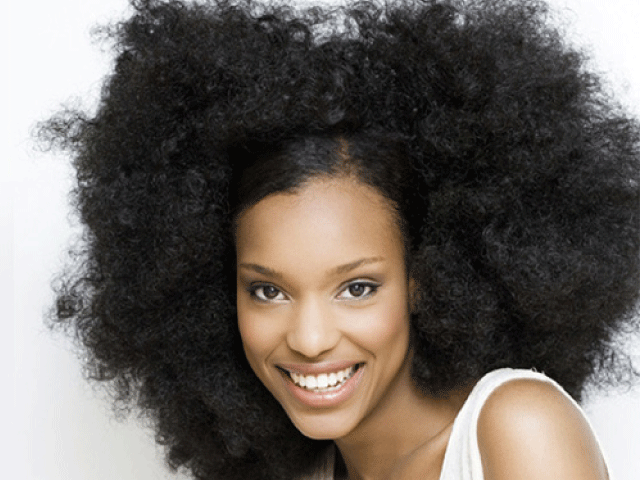Fine hair no doubt
enhances good looking but
maintaining it is what keeps people away from keeping a long air in this report Raheem Opeyemi report that with a little care you too can
have fine hair.
Boost
Thin Hair With Silicone
Thin,
lifeless hair is a common complaint, yet few women know the best remedy. Heavy
conditioners will just leave your hair limp. A better bet is to use
products with silicone, such as dimethicone or cyclomethicone. These coat the
strands with a thin film, creating fuller hair that doesn’t look greasy. The
silicone stays put even after you rinse.
Eat Fish
and Nuts for Healthy Hair
The same
nutritious foods that are good for your body promote stronger, healthier hair.
Load up on salmon and nuts! Their protein and omega-3 fats help create a
healthier scalp. Leafy vegetables, beans, and carrots are also good for your
tresses. Beware of fad diets aimed at quick weight loss. They can starve your
body of important nutrients, which can lead to brittle hair or hair loss.
Protect
Shine With Lukewarm Water
Hot water
can strip the protective oils that act as a natural conditioner. And your
hair’s natural shine can disappear. This doesn’t mean you have to suffer
through cold showers to avoid dull hair. Instead, use lukewarm water to wash
your hair. Pamper the scalp by massaging it while you shampoo.
Mend
Split Ends With Protein
If you
often style your hair with hot tools; colour, bleach, or perm a lot, you can
damage hair’s protective outer layer. The result is “split ends.” Thankfully,
there are hair products to help mend the damage. Look for conditioners with
protein. They sink into the hair shaft and repair split ends. The fix only
lasts until the next shampoo, so you’ll need to use them regularly.
Get That
‘Full Bounce’
The
fullness of your hair is in your genes and your styling technique. Natural
redheads have thicker hair, while blondes have the thinnest but greatest number
of hairs. Luckily, you can plump up the volume whatever its colour. Use a
leave-in conditioner or mousse and dry the root area first. Flip your hair
upside down as you dry, for an extra volume boost. If your hair is very fine,
use low heat with any hot tool.
Don’t
Treat Dandruff With Oils
Dandruff
is not a type of dry skin at all despite the white flakes that float down to
your shoulders. A minor skin disorder in the scalp is to blame. Rubbing oil
into the scalp can just make it worse. Shampoos with medicine are the best fix
from a drugstore or a dermatologist. Leave the shampoo on for 5 minutes to soak
into your scalp. Be sure to rinse thoroughly.
Skip
High-Powered Blow Dryers and Irons
You might
expect a powerful blow dryer to slice a few precious minutes off your styling
routine. But in a comparison of blow dryers, Consumer Reports found they all
dried hair in about the same amount of time. Some are much noisier than others,
though. The group found the more expensive dryers were the quietest, and the
noisiest were as loud as a lawn mower.
Brush
Less to Limit Hair Loss
Don’t
believe that myth about 100 brush strokes a day. Too much brushing will snap
off hairs. Some hair loss is normal – most people lose 50 to 100 hairs every
day. These have stopped growing and have reached a resting stage. To keep from
losing any more hair than normal, use a brush with ball-tipped bristles. And
never brush wet hair, use a comb instead.
Shower
Before You Swim
Avoid
chlorine damage by rinsing your hair before entering the pool or wearing a swim
cap. If your hair is already saturated with water, it won’t absorb as much from
the chemical-laden pool. Use a pH-balancing hair product to further protect
your hair
Take Care
With Tightly-Wound Hair
Ponytails
and braids are great way to showcase your personal style. But when they’re too
tight, they can break off hair and damage the roots. Wearing a tight style
around the clock can even make your hair fall out. Set your hair free every
night! For braided styles meant to last months, leave hair a little loose at
the scalp. If you wear heavy extensions, give your hair a break after three
months.
Don’t Let
Brands Clean Your Wallet
What are
you really getting for extra money spent on specialty products? Consumer
Reports tested products on 1,700 ponytail samples and found that pricy shampoos
were no better than cheaper ones. What should you buy? Choose shampoos and
conditioners designed for your hair type, such as those for oily, fine, or
colour-treated hair.
Use
Gentle Color to Cover Grays
Hair
doesn’t just change color as we get older – it also becomes weaker and grows
more slowly. That means damaged hair won’t be snipped off as quickly by
haircuts. Chemicals used on “mature” hair should be weaker to avoid damage.
Keep
Brushes Away From Your Curls
Curly
hair is more likely to break and become dry and brittle. Gently using a pick
keeps curls looking better than combing or brushing. Conditioners with polymers
can smooth hair and make it more manageable. Look out for polyvinylpyrrolidone
on the label. Don’t overdo the use of flat-irons and relaxers, which can damage
hair.
Give the
Blow Dryer a Rest
Frequent
blow-drying is hard on your hair and can actually lead to hair loss. When you
do blow dry, turn down the heat. Finer hair is especially sensitive to damage
from heat, but even thick manes need some tender care. Protect your hair before
styling by using a conditioner or a heat styling product.

